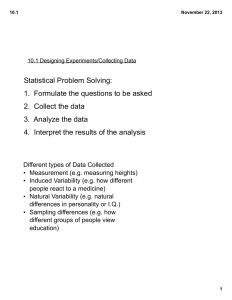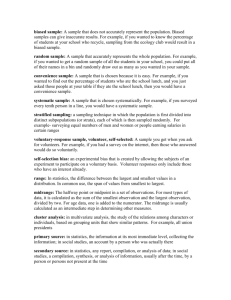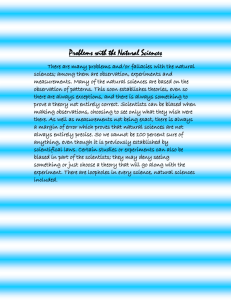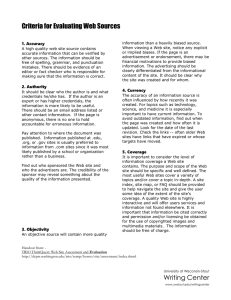Statistical Problem Solving: 1. Formulate the questions to be asked
advertisement
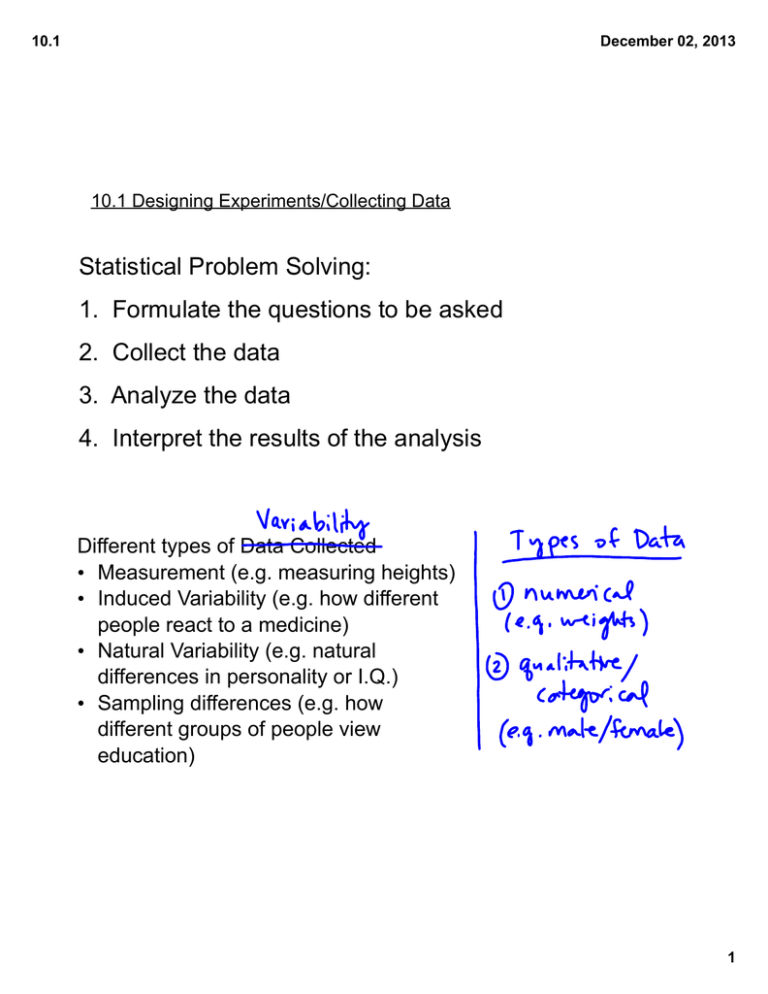
10.1 December 02, 2013 10.1 Designing Experiments/Collecting Data Statistical Problem Solving: 1. Formulate the questions to be asked 2. Collect the data 3. Analyze the data 4. Interpret the results of the analysis Different types of Data Collected • Measurement (e.g. measuring heights) • Induced Variability (e.g. how different people react to a medicine) • Natural Variability (e.g. natural differences in personality or I.Q.) • Sampling differences (e.g. how different groups of people view education) 1 10.1 December 02, 2013 population--the entire group represented in the study (e.g. all U of U students) sample--the subset of the population that is chosen for the study (e.g. 200 randomly chosen U of U students) Note: For a "good" study, we need to ensure, somehow, that the sample we choose is random. If it's not random, then it will be biased. Examples of biased vs. fair sampling: 2 10.1 December 02, 2013 Are these questions fair or biased? 1. Do you think this obnoxious pink color is cute or do you prefer that beautiful yellow? 2. Which color do you prefer, yellow or pink? 3. Which ice cream flavor is your favorite? 4. Do you like bloody steak or refreshing vegetables? If you wanted to choose a sample of 50 students from a school of 400, do you think it would be better to have the students line up in a row and choose the first 50 in a line or to put all the names in a hat and draw out the first 50? 3 10.1 December 02, 2013 4
